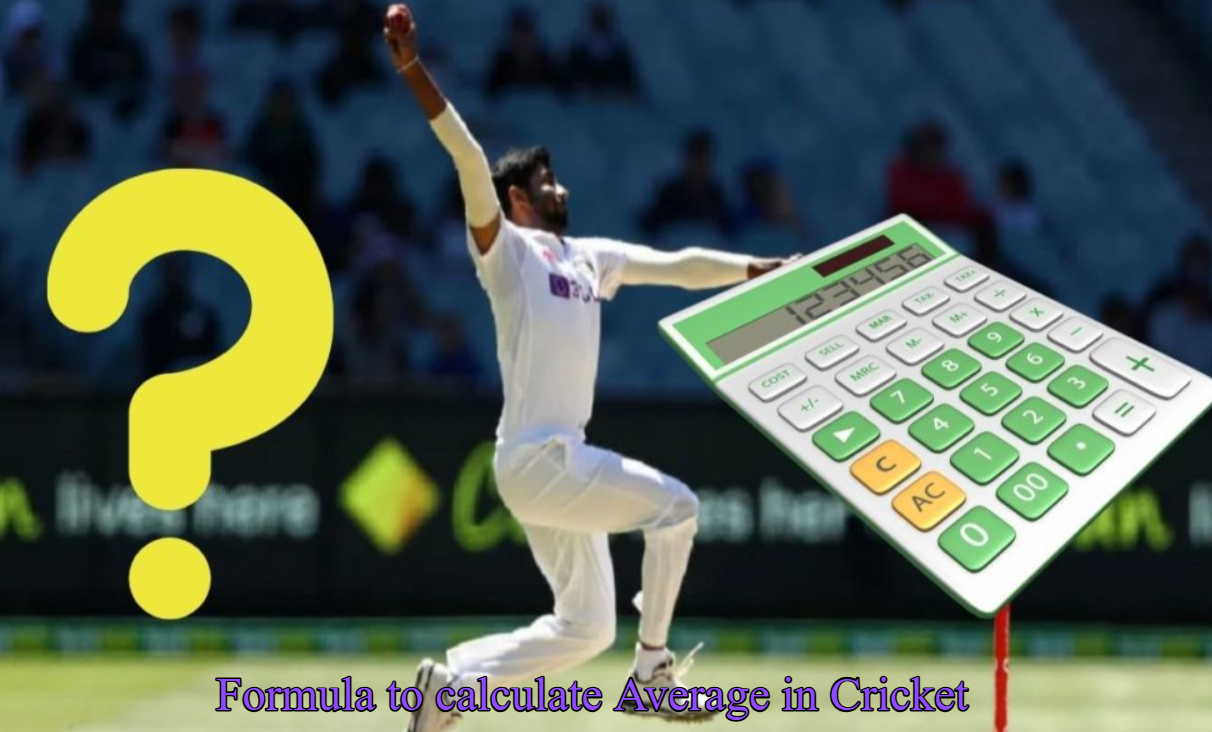Sure cricket is one of the few sports that has changed a lot in regards to rules and characteristics of the game. No one would deny that. However, as with all sports the statistics and numbers in cricket will always remain crucial because they reveal the truth, know? Like that an of the significant numbers in cricket is an average. It can be a batting or an average of bowling. But, most times when we talk about averages for cricket they consider what is known as the average of their batting. We’re here today to discuss both kinds and how average is determined in cricket as well as an easy method of calculating it. Let’s begin right now.
Batting Average Formula
Let’s be simple in this instance when we look at the most straightforward explanation of batting averages in cricket, it will be like this: A batting score indicates how many runs a batter can score on an average prior to getting out. Simple and straightforward!
Batting average (or bowling) average doesn’t have a value you can determine on a per-match basis It is calculated for every match the player has played in the specific type of game. Take, for instance, the total number of runs an individual has made and then divide it by the number of occasions they’ve been disqualified (aka was thrown out).
For instance:
If the batter has scored 1000 runs and was in 25 games, the average batting is 1,000 x 25, which is 40.
Also, the dismissals play an important role in this, don’t you think? But what happens to the instances where batsmen are “not out”? In these cases the rules are according to the rule books the runs and innings are still considered, however dismissals do not. Thus, non-outs can cause the average rise even though the player did not score many runs during those innings.
Bowling Average Formula
The bowling average functions in a different way than batting average. How do you explain that? In this instance it is because bowling averages inform us about the number of runs a bowler is willing to give away with each wicket they play.
Here’s how it will work:
The total number of runs conceded and the number of wickets used = Average of bowling
Example:
If a bowler is able to give 300 runs, and takes 15 wickets, the average is 30 x 15= 20.
If the bowling average is less and is deemed to be an excellent performance, however it’s not the only thing that determines the bowler’s performance There are other factors that are also important. However bowlers who give less runs and has more wickets is always beneficial.
Why Do These Averages Even Matter?
So, tell us, if you don’t have these numbers in your face what would people get an idea of how a player has performed or done over the years? We believe that these numbers are closer to the track records of players. You know an increased batting average indicates that a player is able to hit runs more often without having to leave the field or getting out of the way, and that’s an enormous benefit for any team.
Similar to that, a bowling average indicates that the bowler doesn’t give away too many runs while still taking wickets to the players which is a great thing. In modern-day cricket, these figures have a significant role to play in deciding who to pick and which one to stay clear of to build a strong team.
What’s Considered a “Good” Average Anyway?
We’ve talked about how to calculate bowling or batting scores when playing cricket. However, what is considered to be a good average, super-good, or decent average?
Here’s the deal:
- In the Test match, an batting percentage greater than 50 is amazing, and an average of bowling under 30 is a bit impressive.
- In ODIs, a bowling average of 40+ is a good number while a bowling average less than 30 is quite acceptable yet again.
- The average doesn’t really matter as much in T20s However the batting average of 35 or bowling rate of under 25 is an impressive feat.
Averages That’ll Blow Your Mind
Do we want to talk about some of the most amazing and most amazing averages ever recorded in cricket? There have been certain players who have had excessively high averages that simply make your jaw fall.
For instance, you may have been familiar with Sir Donald Bradman, the king of Test cricket with a batting average of 99.94. In modern day cricket, when some critics claim that the grounds are smaller, pitches are not as great as they used to be, we have more equipment, and things like that, despite all this there is no one who has reached that level.
In the bowling department, George Lohmann holds the record for the most impressive Test bowling performance up to now. What was his average bowling? It was 10.75 scores per wicket.


